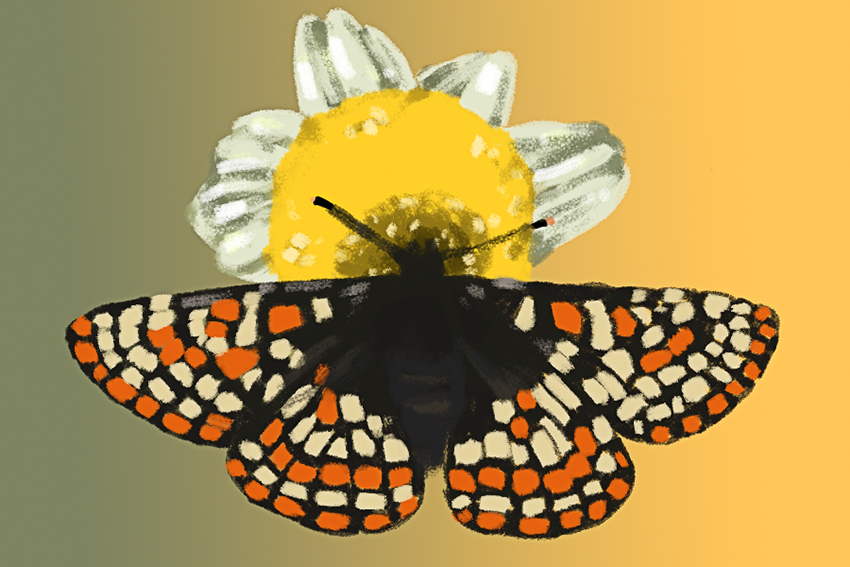UT geology professor Camille Parmesan studies the endangered Edith’s Checkerspot butterfly, which serves as a living warning of climate change in North America.
Parmesan recently began working with climate experts such as the National Oceanic and Atmospheric Administration and the National Center for Atmospheric Research to evaluate global warming’s effect on animals and plants. For over a decade, Parmesan has studied the Edith’s Checkerspot butterfly, which is uniquely susceptible to climate change because of its habitat sensitivity.
Parmesan was one of the first to claim, in 2005, that species were declining due to warming events as opposed to habitat destruction and deforestation. One of Parmesan’s past studies found that populations in southern areas, such as regions of Mexico, are experiencing higher extinction rates compared to species in the north. She discovered a relationship between the butterfly’s migration and global warming trends. Parmesan found that over time, butterflies travel north and to higher elevations as a region gets warmer.
“I wasn’t looking at butterflies affected by human population, I was looking at them in preferable habitats because I was looking at climate,” Parmesan said. “Even though the habitat is great in Mexico, they are being killed by warming and drying. When you look at it — the main issue is habitat loss and habitat degradation, but by showing extinction in the south and into lower elevations, it (the research) shows a much grander scale.”
According to Parmesan, the Edith’s Checkerspot butterfly is more vulnerable to climate change because it typically lives in small habitats and relies on one specific flower — the dwarf plantain — for early developmental support. Parmesan said the butterflies’ migration patterns are shifting as their nectar sources become less available due to disruptive warming.
“(The butterflies) are using a host plant that doesn’t last long because as it heats up, it dries faster, and (the butterflies) can’t keep up,” she said. “We saw a large northward shift, which was an indication of long term climate trends.”
Michael Singer, retired UT researcher who studied the Edith’s Checkerspot with Parmesan, said the general public isn’t paying enough attention to the demands of biodiversity preservation.
“People should care … when biodiversity is reduced because it is necessary for ecosystem services that support human life,” Singer said. “Butterflies are very visible and charismatic manifestations of community and ecosystem health; if you manage a habitat to conserve butterfly diversity you will be conserving biodiversity more generally than just the butterflies.”
Parmesan said she recently found that the Edith’s Checkerspot butterfly is rapidly accepting new host plants at higher elevations, stabilizing their populations for now. She added that more work reducing the effects of climate change needs to occur to preserve biodiversity.
“Species populations are already being impacted by climate change,” she said. “Even if we come up with zero carbon tomorrow we will still deal with climate change for the next 100 years. This isn’t something happening in the future, this is happening now.”















